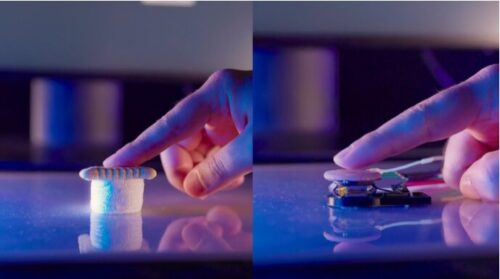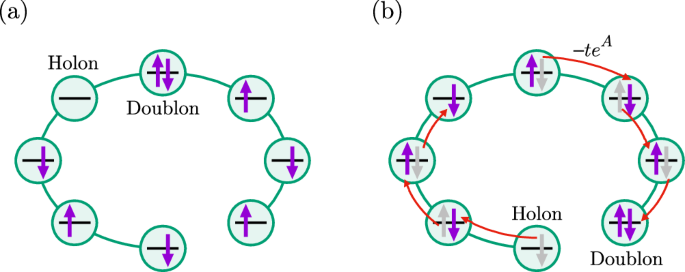2024-03-13 スイス連邦工科大学ローザンヌ校(EPFL)

<関連情報>
- https://actu.epfl.ch/news/robotic-interface-masters-a-soft-touch-2/
- https://www.pnas.org/doi/10.1073/pnas.2314901121
SORI:柔らかさ知覚の本質を解明するソフトネス・レンダリング・インターフェース SORI: A softness-rendering interface to unravel the nature of softness perception
Mustafa Mete , Haewon Jeong , Wei Dawid Wang , and Jamie Paik
Proceedings of the National Academy of Sciences Published:March 11, 2024
DOI:https://doi.org/10.1073/pnas.2314901121
Significance
The sense of softness is vital for survival, well-being, and complex social interactions among animals and humans. It guides decisions ranging from food selection in animals to the detection of medical anomalies in humans. Yet, our grasp of this sensation, including its neural pathways and underlying cognitive processes, remains incomplete. This study introduces a haptic display, the softness-rendering interface (SORI), which quantitatively replicates softness sensations. By adapting to the individual properties of fingertips and bridging the gap between actual and perceived softness, SORI offers a leap forward in understanding and accurately simulating this pivotal sense. This advancement not only holds promise for enhancing haptic technology but also paves the way for deeper insights into the neuroscience of softness perception.
Abstract
Tactile perception of softness serves a critical role in the survival, well-being, and social interaction among various species, including humans. This perception informs activities from food selection in animals to medical palpation for disease detection in humans. Despite its fundamental importance, a comprehensive understanding of how softness is neurologically and cognitively processed remains elusive. Previous research has demonstrated that the somatosensory system leverages both cutaneous and kinesthetic cues for the sensation of softness. Factors such as contact area, depth, and force play a particularly critical role in sensations experienced at the fingertips. Yet, existing haptic technologies designed to explore this phenomenon are limited, as they often couple force and contact area, failing to provide a real-world experience of softness perception. Our research introduces the softness-rendering interface (SORI), a haptic softness display designed to bridge this knowledge gap. Unlike its predecessors, SORI has the unique ability to decouple contact area and force, thereby allowing for a quantitative representation of softness sensations at the fingertips. Furthermore, SORI incorporates individual physical fingertip properties and model-based softness cue estimation and mapping to provide a highly personalized experience. Utilizing this method, SORI quantitatively replicates the sensation of softness on stationary, dynamic, homogeneous, and heterogeneous surfaces. We demonstrate that SORI accurately renders the surfaces of both virtual and daily objects, thereby presenting opportunities across a range of fields, from teleoperation to medical technology. Finally, our proposed method and SORI will expedite psychological and neuroscience research to unlock the nature of softness perception.



